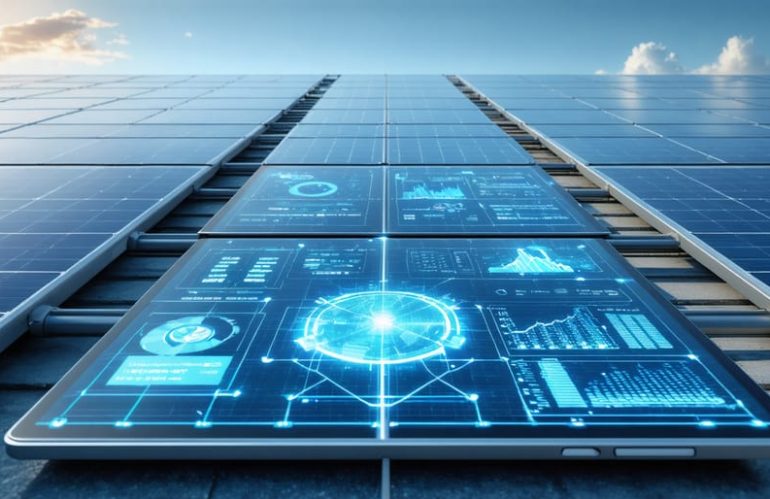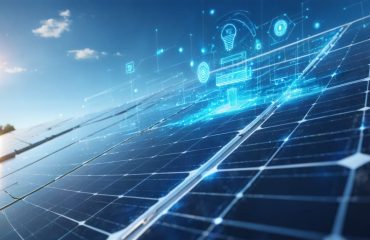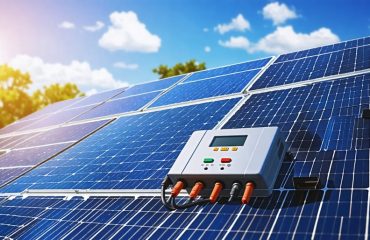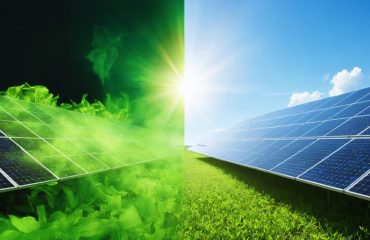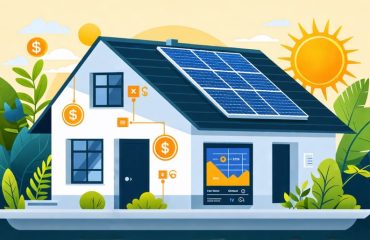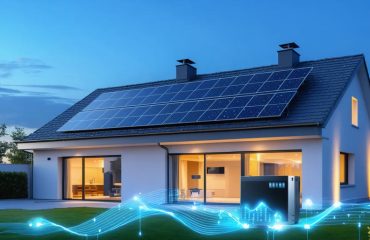As energy costs continue to rise and environmental concerns take center stage, solar panels have emerged as a compelling solution for homeowners seeking both financial savings and ecological responsibility. These sophisticated power-generating systems harness the sun’s abundant energy, transforming ordinary rooftops into personal power plants. Yet, like any significant home improvement investment, solar panels come with their own set of advantages and disadvantages that deserve careful consideration.
While the promise of reduced electricity bills and energy independence attracts many homeowners, understanding the complete picture – from initial costs to long-term benefits, maintenance requirements to potential limitations – is crucial for making an informed decision. Modern solar technology has evolved significantly, offering improved efficiency and reliability, but factors such as geographic location, roof orientation, and local weather patterns can significantly impact their effectiveness.
This comprehensive guide examines the key benefits and limitations of solar panel systems, helping you evaluate whether this renewable energy solution aligns with your home’s needs and your environmental goals. We’ll explore how diagnostic technologies can optimize system performance while addressing common concerns about installation, maintenance, and return on investment.
Key Advantages of Modern Solar Panel Systems
Real-Time Performance Monitoring
Modern solar panel systems come equipped with sophisticated solar system health monitoring capabilities that transform how homeowners track and optimize their energy production. These smart monitoring systems provide real-time data through user-friendly mobile apps and web platforms, letting you check your system’s performance anytime, anywhere.
You can easily track daily energy generation, compare monthly performance, and spot potential issues before they become serious problems. The monitoring systems alert you when production drops below expected levels, helping you identify if panels need cleaning or maintenance. Many systems even provide weather-adjusted performance metrics, so you know exactly how your installation is performing relative to available sunlight.
This real-time feedback helps optimize panel placement and timing of energy usage to maximize savings. You can see exactly when your system produces peak power and adjust your household energy consumption accordingly. Plus, having detailed performance data makes it easier to verify your energy savings and ensure you’re getting the full benefit of your investment.
These monitoring features also make it simpler to document system performance for warranty claims or maintenance requests, giving you peace of mind about your solar investment.
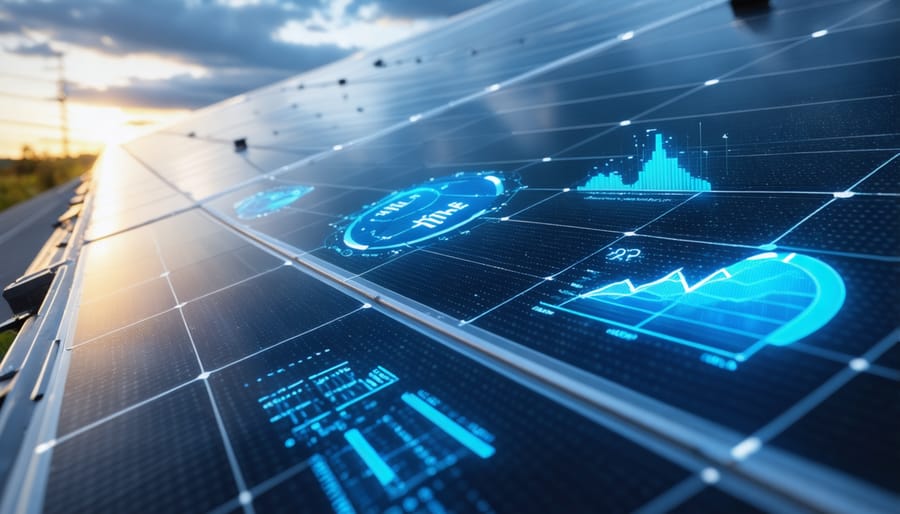
Predictive Maintenance Capabilities
Modern solar panel systems come equipped with smart monitoring capabilities that help prevent unexpected breakdowns and optimize performance. These intelligent systems continuously track your solar panels’ output, efficiency, and overall health, sending real-time updates to your smartphone or computer. When potential issues arise, you’ll receive instant notifications, allowing you to address problems before they become serious.
Many monitoring systems can detect common issues like dust accumulation, shade interference, or electrical problems. They provide easy-to-understand performance reports and maintenance recommendations, helping you keep your solar investment running at peak efficiency. Some advanced systems even use artificial intelligence to predict when components might need replacement or cleaning, saving you money on unnecessary maintenance visits.
These predictive tools also track weather patterns and adjust performance expectations accordingly, giving you realistic insights into your system’s output. This feature is particularly valuable for planning your energy usage and understanding your actual savings. While these monitoring systems add slightly to the initial cost, they typically pay for themselves by preventing costly repairs and maximizing energy production throughout your solar panels’ lifetime.
Enhanced Energy Efficiency Detection
Modern solar panels come equipped with sophisticated monitoring systems that help homeowners get the most out of their investment. These smart diagnostic tools continuously track power generation, instantly alerting you to any drops in performance or potential issues. Through user-friendly mobile apps and web interfaces, you can view real-time energy production data and historical trends, making it easy to verify your system’s efficiency.
These monitoring solutions can detect problems like shade interference, dust accumulation, or electrical issues before they significantly impact your energy output. Many systems even provide automated maintenance recommendations, helping you keep your panels operating at peak efficiency. Weather forecasting features allow you to predict upcoming energy generation, helping you plan your power usage more effectively.
By leveraging these diagnostic capabilities, homeowners typically see 15-20% better energy yields compared to unmonitored systems. The data also proves valuable for warranty claims and can help technicians quickly diagnose and fix any issues that arise. This proactive approach to system monitoring ensures you maximize your return on investment while maintaining optimal performance throughout your solar panels’ lifetime.
Understanding System Limitations
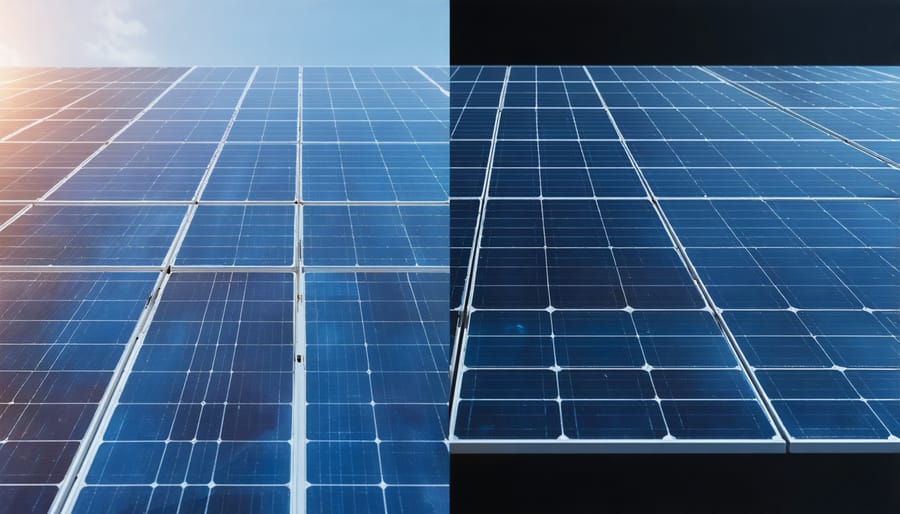
Weather Impact Detection
Modern solar panels come equipped with sophisticated diagnostic systems that actively monitor weather conditions and their impact on panel performance. These smart systems can detect various environmental challenges, from heavy snow accumulation to unusual shading patterns, helping homeowners maintain optimal energy production year-round.
During rainy or cloudy periods, diagnostic tools measure the reduced energy output and automatically adjust performance expectations. This data helps homeowners understand their system’s behavior during different weather conditions and plan their energy usage accordingly. The systems can also alert you when snow or debris accumulation reaches levels that significantly impact performance, allowing for timely maintenance.
Most notably, these monitoring systems can identify potential hot spots or performance issues caused by partial shading, which is particularly useful in areas with changing seasonal sun patterns or growing trees. They also track temperature fluctuations, as extreme heat can affect panel efficiency, and automatically implement cooling mechanisms when necessary.
While these diagnostic features add value to your solar installation, they do require occasional updates and maintenance to ensure accurate monitoring and reporting.
Maintenance Requirements
Solar panels are remarkably low-maintenance systems, but understanding their regular maintenance requirements is essential for optimal performance. Most maintenance tasks involve simple cleaning to remove dust, leaves, and bird droppings that can reduce efficiency. This typically needs to be done 2-4 times per year, depending on your local environment.
Modern solar installations come equipped with monitoring systems that alert homeowners to any performance issues. These smart diagnostics track energy production and can identify potential problems before they become serious, making maintenance even more straightforward. You’ll receive notifications through a smartphone app or web portal if your system’s output drops unexpectedly.
While professional inspections are recommended annually to check electrical connections and mounting hardware, many homeowners can handle routine cleaning themselves. During winter, you may need to remove snow accumulation, though panels are typically installed at an angle that promotes natural snow sliding. With proper care, solar panels can maintain their efficiency for 25-30 years, making them a reliable long-term investment in sustainable energy.
Initial Investment Considerations
When considering solar panels for your home, the initial investment typically ranges from $15,000 to $25,000 for a complete system. While this upfront cost may seem substantial, various financial incentives can significantly reduce your out-of-pocket expenses. Federal tax credits currently offer a 30% deduction of the total system cost, and many states provide additional rebates and incentives.
The long-term financial benefits often justify the initial investment. Most homeowners see a return on investment within 5-8 years through reduced electricity bills. Modern solar panels come with warranties of 25-30 years, ensuring decades of energy savings. Additionally, many financing options are available, including solar loans, leases, and power purchase agreements (PPAs), making solar more accessible to homeowners with different budgets.
When calculating costs, consider that solar panels typically increase property values by 4-6%. The system’s monitoring capabilities and smart technology integration also help optimize energy production and consumption, maximizing your investment’s value over time. Many installations now include performance guarantees and production monitoring, providing peace of mind for your investment.
Making Diagnostic Data Work for You
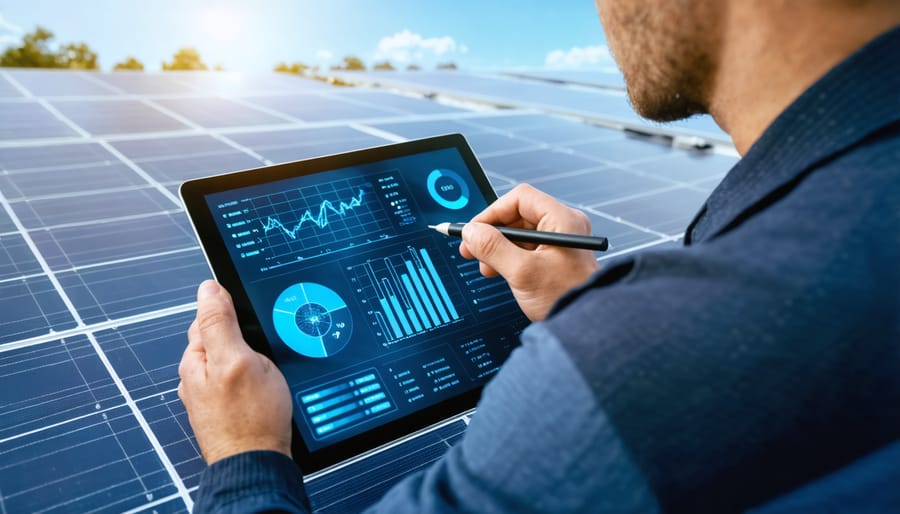
Understanding Performance Reports
Modern solar panels come with detailed performance reports that help you track your system’s efficiency and energy production. These reports typically show daily, monthly, and yearly power generation, helping you understand if your panels are performing as expected. Most monitoring systems now offer user-friendly mobile apps that display this information in easy-to-read graphs and charts.
Key metrics to watch include peak production hours, total energy generated, and performance ratio. Your system should generate the most power during midday hours when sunlight is strongest. If you notice significant drops in production during these peak times, it might indicate an issue that needs attention.
Weather impact data is another crucial aspect of these reports. They show how clouds, rain, or seasonal changes affect your system’s output. This information helps set realistic expectations for energy production throughout the year and helps identify when decreased performance is natural versus when it signals a problem.
Many modern monitoring systems also send automatic alerts if production falls below expected levels. These notifications can help you catch and address issues quickly, whether it’s something simple like dust accumulation or more serious problems requiring professional attention.
To get the most from your system, compare your actual production numbers with the initial estimates provided during installation. This helps ensure your investment is delivering the expected returns and helps identify opportunities for optimization.
Taking Action on Alerts
When your solar monitoring system sends an alert, it’s important to respond promptly and appropriately. For minor issues like performance drops, start by troubleshooting common issues such as dirt accumulation or shade interference. A simple visual inspection and gentle cleaning might be all that’s needed to restore optimal performance.
For connectivity alerts, check your internet connection and monitoring device first. Often, these warnings are resolved by resetting your monitoring system or router. If you receive power production warnings, examine weather conditions and time of day before assuming there’s a system malfunction.
More serious alerts, like inverter faults or electrical issues, require professional attention. Contact your solar installer immediately if you notice error codes, unusual noises, or complete system shutdown. Many installers offer remote diagnostics, allowing them to assess the situation before sending a technician.
Keep a log of all alerts and your responses to them. This documentation helps identify patterns and can be valuable for warranty claims or maintenance planning. Remember that most modern solar systems include smartphone apps that provide real-time notifications and step-by-step guidance for addressing common alerts.
For maximum system longevity, consider scheduling annual professional inspections, even if you haven’t received any concerning alerts. This proactive approach helps catch potential issues before they become serious problems.
Future-Proofing Your Solar Investment
Investing in solar panels is just the beginning of your renewable energy journey. Today’s solar systems come equipped with smart monitoring technologies that help protect and optimize your investment for years to come. These advanced diagnostic tools provide real-time performance data, allowing you to track energy production and identify potential issues before they become costly problems.
Modern solar installations often include smartphone apps and web portals that give you instant access to your system’s performance metrics. These platforms can alert you to maintenance needs, weather impacts, and even suggest optimal times for energy consumption based on your production patterns. This level of monitoring ensures you’re maximizing the long-term system lifespan while maintaining peak efficiency.
Looking ahead, many current solar panel systems are designed with upgradeability in mind. As battery technology continues to advance, you can add energy storage solutions to your existing setup, enhancing your energy independence. Additionally, microinverter technology allows for panel-by-panel optimization, making it easier to upgrade individual components rather than replacing the entire system.
The solar industry is also moving toward more integrated home energy management systems. These smart solutions can coordinate your solar production with home automation, EV charging, and other energy-consuming devices to optimize your household’s overall energy usage. Some manufacturers now offer warranties that include technology upgrades, ensuring your system can evolve with emerging innovations.
To protect your investment, consider choosing equipment from manufacturers with strong track records and robust warranty programs. Many leading brands offer 25-year warranties and maintain compatibility with newer technologies, making future upgrades more straightforward and cost-effective. This forward-thinking approach ensures your solar investment continues to deliver value while adapting to your changing energy needs.
The decision to invest in solar panels represents a significant step toward sustainable living and energy independence. As we’ve explored throughout this article, solar panels offer compelling advantages, from substantial long-term energy savings to reduced environmental impact and increased property value. The ability to generate clean, renewable energy while protecting against rising utility costs makes solar power an attractive option for many homeowners.
However, it’s essential to carefully consider the initial investment, installation requirements, and maintenance needs before making your decision. While the upfront costs may seem daunting, various financial incentives, tax credits, and financing options can make solar panels more accessible. The technology continues to improve, offering better efficiency and reliability than ever before.
Your specific circumstances, including your location, roof condition, energy consumption patterns, and local climate, will play crucial roles in determining the effectiveness of a solar installation. We recommend consulting with qualified solar professionals who can assess your property and provide tailored recommendations based on your unique needs and goals.
By weighing both the advantages and disadvantages presented here, you can make an informed decision about whether solar panels align with your environmental values, financial objectives, and long-term energy needs. Remember that investing in solar power isn’t just about immediate benefits – it’s about contributing to a sustainable future while potentially securing significant savings over time.

